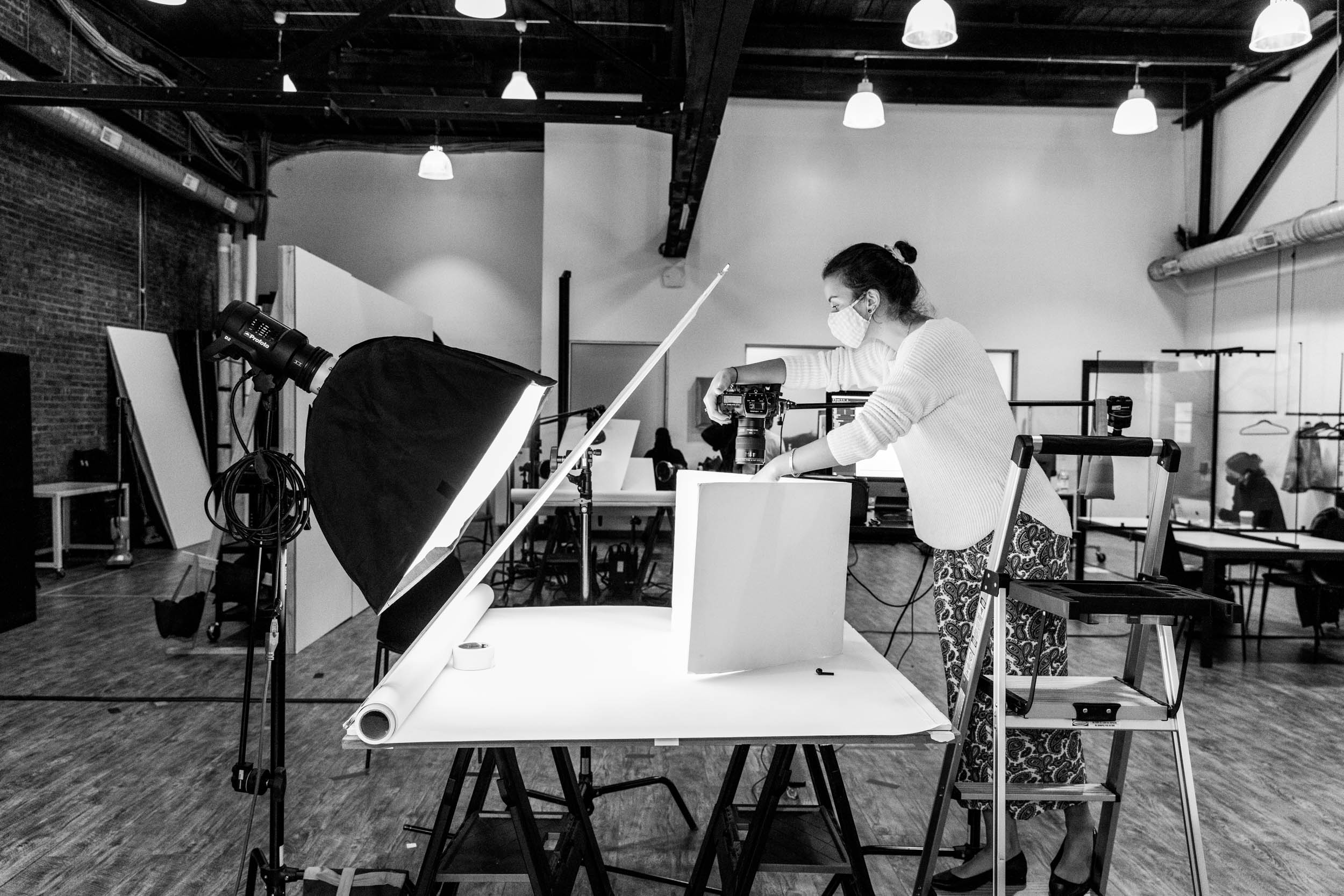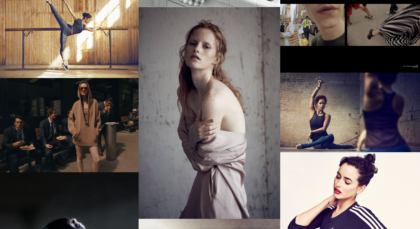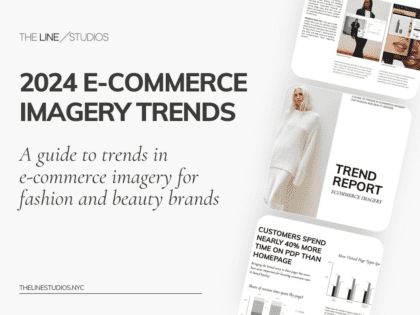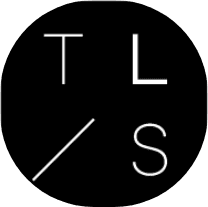The Line Studios is an in-house creative studio space in Queens, New York, that offers full-service creative production for e-commerce brands.
There is an inevitable inflection point in every large brand’s growth where the question arises: “Does it make sense to build our own in-house creative production studio?”
Why? Generally, this is because the number of assets needed merits a more efficient and cost-effective solution than what’s currently being offered by outside vendors.
Historically, that is where we have come in as partners. We guide brands through the process of evaluating the efficacy of the in-house studio model. This includes brands that already have the model in place but may want to re-evaluate it.
At The Line Studios, we bring years of experience at major brands to bear: from scrappy startups to well-established luxury houses. We have helped forecast, budget, and arrange for the creative team that brings that studio to life. We know firsthand that as with the creation or revision of any department, companies must be strategic to maximize the probability of success.
Given our expansive experience and ongoing partnerships with large brands, we wanted to share our advice on how to design, build, and manage your own in-house creative production studio for maximum efficiency — and how to decide if that is the right path for you.
The five critical questions to ask to ensure an efficient internal content studio
Every company’s needs are different – from staffing and product to sample management and warehousing. This means that there is no “one-size-fits-all” solution to the internal studio model. Instead, every studio is going to have its unique requirements to fit seamlessly into the existing organization.
This said, there are a couple of universal questions about best practices that should be asked:
1. Who is the right person (or people) to run the studio set-up process?
The beginning of every evaluation process around the in-house creative production studio model should always involve a photography professional. We cannot stress enough the importance of this one because there is simply no substitute for expertise. Many (if not all) of the mistakes we’ve seen over the years in this transition process could have been avoided if the company had brought a knowledgeable photography professional into the conversation from the beginning.
Too often, brands try to build or redesign their production capabilities without expert input, relying instead on existing resources. This is like picking a new office space without the input of the Facilities Director. Or installing a new accountancy software without speaking to the team in the Finance Department.
Finance, Facilities and IT will know about certain pieces. However, they are often not fully versed in how photography and creative operations are managed. Then, once the build-out is ready, the brands have to retrofit personnel to run the studio that has been built without their input. This exponentially increases the risk of it starting with (avoidable) inefficiencies baked in.
To give the studio the best chance of being a success, you need to have expert opinions from the start. They can help with everything from software, studio buildout, team structures, and — of course — the budget. Combining practical studio expertise with someone intimately familiar with the brand’s requirements will ensure a smoother process.
2. What does the right team look like?
As an HR person will attest, getting your staffing right is super important. And, just like in any other line of the business, it isn’t easy.
Creating a team that can flex with your production volume is critical. Staff, freelance talent, and vendors can be combined to handle the variations in production. For example, it might make the most sense to keep the creative workforce (the photographers, retouchers, stylists, etc.) freelance initially, with the full-time employees being on the production and operations side.
The continuity of these more process-driven roles will give you a more reliable and efficient operational foundation. It will also allow you to staff up (or down) with total flexibility as your production-volume requirements shift.
This approach will significantly reduce over-extension risk as you get the studio up and running.
We’ve also worked with clients to build flexible teams of long-term contractors. These can be easily transitioned to full-time employees as the volume increases. This not only provides an opportunity for cost savings but is a fluid approach to staffing.
3. How do I figure out the REAL cost-per-look?
Cost-per-look is the industry standard methodology for figuring out the creative production cost on a per-SKU basis. It’s also a useful metric to quickly ascertain the savings to be achieved by taking the asset production in-house.
For example, if Quicky-Snap Photos charged $8500 for 50 SKUs = $170 cost-per-look. Then your goal is to get sub-$170 for the internal creative studio to make better financial sense, right?
Not quite. Calculating your internal cost-per-look is a bit more complicated. And everyone seems to do it differently. Some questions we suggest that you should consider include:
- Does your return on investment factor in the Capital Cost for equipment and software?
- Do labor costs include the cost of Employees’ taxes and benefits?
- Are you factoring in the offset roles for Production, sample management, and sample distribution?
- Did you include the ongoing cost of the lease, the build-out, and Insurance?
Sometimes a brand will just look at its overall shot count (volume) and compare it to existing cost centers or budget line items (cost). In doing so, they leave out the cost of a lease and the studio’s full-time employees. These costs alone can quickly add up to hundreds of thousands of dollars (or millions, depending on the size and location of the studio).
Cost-per-look Example:
Below is a more comprehensive sample cost-per-look to illustrate some common missed costs:
Sample in-house estimate:
Yearly photo budget: $3.2m
# of SKUs: 15,000
“Cost per look”: $213
Missed costs:
In-House positions x5 @ $100k = $500k
Additional costs of insurance/benefits = $150k
Rental / Lease: $7k x 12 months = $84k
Photo budget plus salaries and rent: $3.94m
Truer estimate:
Cost per shot: $262
The latter estimate is over 20% higher than the former. And it still doesn’t take into account the managerial time spent on the project in existing positions! To go back to question one, this is where it pays off in the long run to have a photo studio professional involved every step of the way.
4. How do I spot opportunities to smartly integrate tools for operational efficiency?
We always start by taking the time to evaluate the entire production process and workflow from end to end. We look at creative as a single department and as a larger part of the company. This helps to identify any need for customized solutions for connecting departments and provides improved data for all departments. For example, Merchants and UX teams can react to customer input, while reporting can emphasize actionable feedback for all departments.
Systems and tools play a huge role in running an efficient studio. The more the studio can sync up with the rest of the organization, the better. This can be as simple as making sure the different departments are all working off the same spreadsheets! But more often than not, this will entail some integration of PIM systems to manage sample flow and data between merchants, distribution, and creative.
We find tools like CreativeForce can not only shorten the timeline to get products through the studio but also increase productivity. Task automation and real-time visibility of sample location are huge timesavers.
The question as to what tools work best and will integrate well into your existing workflow is a topic for its blog post. It needs to be evaluated, in-depth, on a case-by-case basis.
5. How can I Leverage Data and Communication Sharing?
Seeing creative as generally subjective overlooks the huge opportunity it has for data sharing. The creation of a brand’s imagery is significant to closing the sale. So making sure you’re leveraging an in-house creative team to execute against customer data is essential.
Be sure to loop in your creative team with tools from other departments. Foresee, customer types, ‘returns early warning’ reports, site heat maps and user flow, etc., can inform creative decisions. This helps to ensure the assets become more and more effective at converting customers. For example, communicating which models, poses, crops and lighting are performing the best in a seamless loop will have an almost immediate positive effect on on-site conversion rates.
We’ve seen certain model types drive more sales depending on customer location, which can help guide casting choices. Or more movement in the model poses that leads to better conversion on certain items.
Returns data can be evaluated for any common creative choices. Perhaps a lack of scaling or an angle that isn’t showing off the product will be obvious to an art director. Even styling decisions, such as tucking or untucking a blouse might impact an item’s sell-through rate.
Helping our clients set up the right tools to act on this data is something we’re passionate about. This is because we know that it has a direct impact on increasing conversion.
Implementing fluid channels of communication between the customer service team, marketing, and creative departments is a must. Use this amazing opportunity to increase your asset effectiveness, streamline your production process, and improve the studio builds ROI.
The Takeaway
At the end of the day, planning, building, and managing an in-house production studio is a significant undertaking. But done correctly, it can be highly effective at delivering high-impact, efficiently-produced creative assets.
To be successful, it requires a strategic foundation with an eye for smart hiring, cohesive internal communications, and a nuanced understanding of the best tools and software for your company. Above all else, partner with experienced and knowledgeable production experts. They will help design measurable processes that will save money while delivering the creative assets you need to grow your business.
Special thanks to Adam Parker at Red Hill Consulting, who has provided a ton of amazing knowledge and experience to The Line Studios and this post.
Questions about this post or our own consulting and in-house operation services? Please feel free to contact us: at hello@thelinestudios.nyc.





